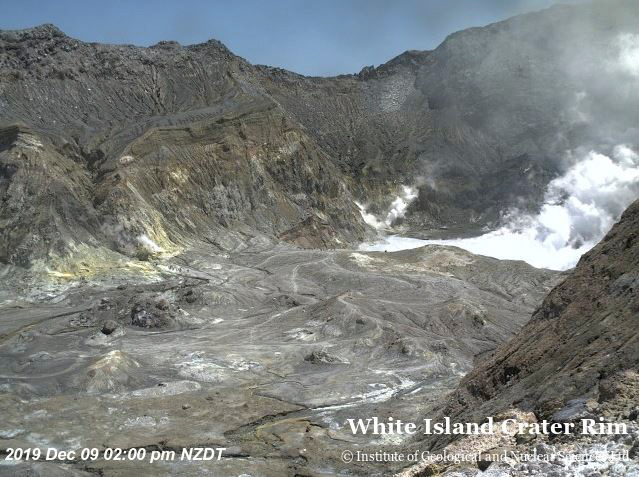'Sudden' volcano eruption in New Zealand kills five, several missing
Updated: 2019-12-09 16:00

NO-FLY ZONE
There seemed to be no danger for people in coastal areas farther away, authorities said.
The eruption was unexpected, but not unusual, an expert said.
"Sudden, unheralded eruptions from volcanoes such as White Island can be expected at any time," Shane Cronin, a volcanologist at University of Auckland, said in comments published by the Australia Science Media Centre.
"We know hydrothermal and so-called 'phreatic' eruptions can occur suddenly and with little or no warning because they are driven by the expansion of super-heated water into steam," he added.
Geological hazard tracker GeoNet raised the alert level for the White Island volcano in November due to an increase in volcanic activity.
Just last week, GeoNet volcanologist Brad Scott said in a report that moderate volcanic unrest continued at White Island, with substantial gas, steam and mud bursts observed at the vent located at the back of the crater lake.
The island's immediate surroundings were hazardous because of the eruption, the National Emergency Management Agency said in an statement, adding that falling ash might affect some areas.
The "short-lived eruption" showed no signs of escalating, New Zealand's geoscience agency GNS Science said in a statement.
The White Island volcano is one of New Zealand's most active.
The White Island volcano's last fatal eruption was in 1914, when it killed 12 sulphur miners. There was a short-lived eruption in April 2016.
White Island became a private scenic reserve in 1953, and daily tours allow more than 10,000 people to visit the volcano every year.
'Whakaari', as it is known in Maori, is New Zealand’s most active cone volcano, built up by continuous volcanic activity over the past 150,000 years, according to geological hazard tracking agency GeoNet.
About 70 percent is under the sea, making the massive volcanic structure the largest in New Zealand.
Reuters
























